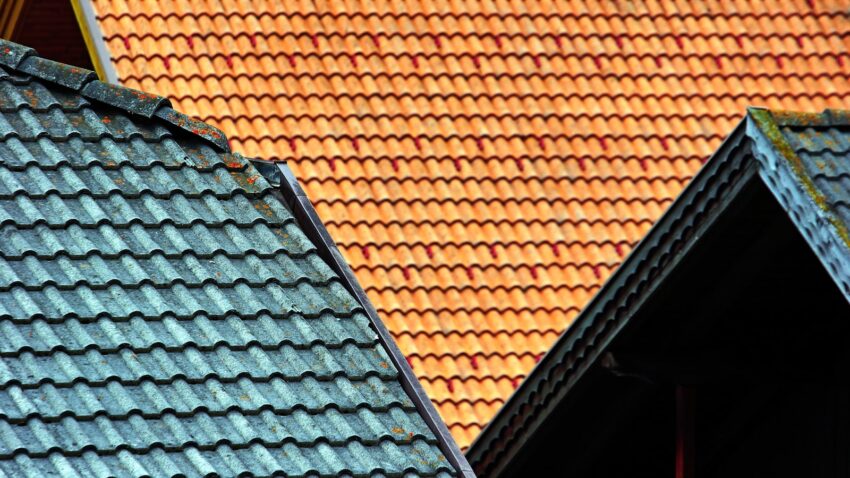Any building project depends critically on the choice of roofing material. Apart from improving the beauty of your construction, the roof affects its endurance and functionality. A correctly selected roofing material can prolong the life of your house, keep comfort, and even help with water conservation. With advice to enable you to make a wise choice, this post on selecting the finest roofing material for your requirements can help.

Sustainability
While some roofing materials, such as asphalt and metal, made from recycled materials have little effect on the environment, others, such as wood, are entirely biological and have minimal impact. Additionally, several synthetic shingles with greater lifetimes resemble wood shakes. Certain materials, including slate, are also quite good for energy efficiency, which will assist in reducing your heating and cooling costs.
Some of these ecological materials, meanwhile, may not be suitable for your locality and have additional upfront costs. The good news is that, depending on where you live, they save you money over time in different ways, and you might qualify for a tax credit to help offset your expenses (as with solar).

Maintenance Needed
Regularly inspecting all of a roof’s weak spots that can experience issues is known as roof maintenance. Throughout its life, every roofing material needs to be maintained. You will need quarterly, biennial, or annual maintenance, depending on your selection. \Due to this, you should think about how frequently you want to do maintenance inspections.
Get an inspection at least once a year, regardless of the types of asphalt roof shingles you select. The same is true with composite (synthetic) shingles and cedar shakes, primarily due to the higher cost of these materials.

Climate and Weather
When choosing a roofing material, take particular climate variables in your location into account. Elements, including temperature, precipitation, and general weather patterns, must influence the most appropriate roofing solution for your house or building.
Roofs in warmer areas come under great heat and sunlight. It is crucial to select materials that will resist these circumstances without degrading or losing their efficacy. Option options for hot climate roofs include concrete tiles, metal roofs with reflecting coatings, or clay tiles. They provide heat resistance and longevity. Conversely, in cold climates where heavy snowfall and freezing temperatures are typical, roofing materials that can withstand snow weight and offer enough insulation are used.
Aesthetics
The appearance of a roofing material is rather important when choosing one. After all, the roof is among the most obvious features of a building’s outside and significantly affects its whole look. Selecting aesthetically pleasing Roofs and fashionable roofing materials will improve the curb appeal of your house and add some elegance and class.
The industry provides several roofing materials with diverse shapes and styles to fit different architectural types and personal preferences. For example, slate has a natural and rustic appeal; clay or concrete tiles give a traditional and timeless design. With their variety of colors and treatments, metal roofs enable design flexibility.
One should think carefully about how nicely the roofing material accentuates the general look of your house. Consider elements include architectural style fit, color coordination with the external walls, and local rules or limits.
Lifespan of Your Roof
Selecting the appropriate roof material for your house calls for weighing the desired lifespan of the roof. Find out how long you wish your roof to last, then take different roofing material longevity into account.
Choose a robust substance that corresponds with your intended lifetime to guarantee longevity. Knowing the maintenance needed to increase the lifetime of your roof is also vital. Choosing long-lasting materials will help you save your house from mildew, water damage, and moss, as well as prevent regular replacements. Ultimately, the curb appeal and general worth of your house could be much influenced by the roof material you choose.
Your Budget
Your budget should be very important when selecting a roofing material for your house. Seek for reasonably priced choices within your means. To make the best decision, compare the cost and lifetime of several roofing materials.
Ensure the selected building code-compliant material fits your budget. See a roofing contractor about price choices to help you decide wisely. Your budget will help you to choose a roofing material that not only meets your budgetary requirements but also offers long-lasting defense for your house.
Wind Rating
Choosing more wind-resistant roofing materials is advised if your house is in an open region with less wind protection from other buildings, houses, or trees. For instance, usually found in coastal homes, wood shingles are naturally wind-resistant. Generally speaking, architectural shingles can survive gusts up to 130 mph, while 3-tab shingles usually can withstand winds up to 60 mph.
Endnote
Selecting the appropriate roofing material means carefully balancing environmental impact, cost, durability, and appearance. Considering these critical elements will help you to make a wise decision that not only safeguards your house but also increases its worth and attractiveness for many years to come.
